As one of the world’s largest countries by area, America is filled with wonders both natural and human-made. As striking as America’s engineering and architectural marvels may be, if you ask us, Mother Nature really steals the show in the Land of the Free. But with so many options to choose from, where do you start? To help narrow your search, we’ve compiled our picks for America’s most stunning natural wonders that belong on every bucket list.
Bisti Badlands – New Mexico
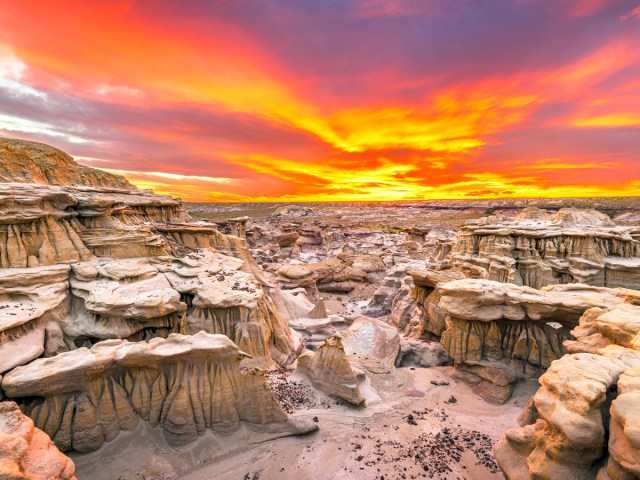
Move over, South Dakota: You’re not the only state known for its badlands. Contrary to its name, this area of northwestern New Mexico is ruggedly beautiful in an alien-like way — so much so that you may be surprised to learn it’s never served as a shooting location for a major sci-fi movie. The Badlands are formally known as the Bisti/De-Na-Zin Wilderness Area — “bisti” translates to “among the adobe formations” in the Navajo language, and “de-na-zin” refers to a crane (the avian kind) — but the area is still commonly referred to as the Bisti Badlands. And if it does one thing, it exemplifies New Mexico’s state motto: “Land of Enchantment.”
Covering about 45,000 acres, the Badlands are dotted with strange and memorable geological formations — mushroom-shaped rocks made of colorful soft sandstone and tall, thin hoodoos shaped by millions of years of erosion. A visit to Bisti may not be for casual explorers — there are no real amenities to speak of, so bringing your own supplies is a must — but a little effort is well worth the payoff: rugged, wide-open, and unbelievably wild wilderness as far as the eye can see.
Napali Coast – Kauai, Hawaii
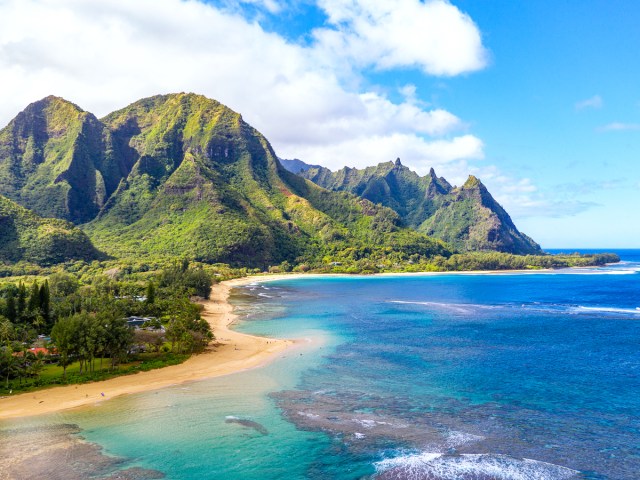
Even if this 17-mile stretch of Kauai’s North Shore looks familiar (you may recognize it from Pirates of the Caribbean or Jurassic Park), there’s still a not-of-this-world look to these sacred razor-ridged cliffs. Their emerald slopes, some cascade-streaked, plunge dramatically into the Pacific, the occasional beach, sea cave, or valley hidden in their impossibly lush folds.
Though experienced hikers may be able to traverse the Napali Coast State Wilderness Park on foot (always check the latest trail conditions first, and make sure you’ve got proper permits and gear), arguably the best views are on offer from the water and air. For those who tour the coast by kayak, raft, or motorized boat, the potential bonus is a thrilling encounter with dolphins or humpback whales (or both), depending on the season. On the other hand, a helicopter tour affords mind-bending perspectives on such features as Manawaiopuna Falls, nicknamed the Jurassic Park Falls for their famous role in the opening scene of the original 1993 movie.
Antelope Canyon – Arizona
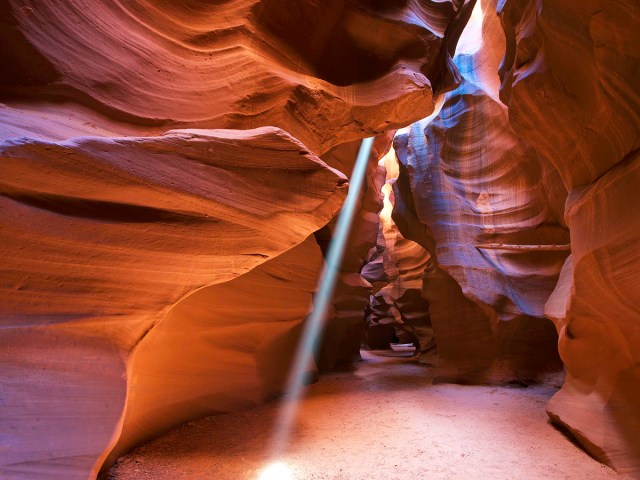
Taking its English name from the pronghorn antelope that used to turn up regularly here, Antelope Canyon goes by different names in the Navajo language. The people who call these lands home know the upper portion as Tse’bighanilini, or “the place where water runs through rocks” — as succinct a summation as you’ll find of slot canyon formation. For those interested in the slightly longer explanation: These tall, wavy chasms that wind a narrow path through deceptively solid rock are the result of an initial crack at the surface, some major flooding, and millions of years’ worth of sculpting by erosion.
While Upper Antelope Canyon is more accessible and better known — thanks to the rays of sunlight that famously bathe the space in ethereal light for much of the year — Lower Antelope Canyon is no less spectacular. This canyon is known in Navajo as Hasdestwazi (“spiral rock arches”) for reasons that will become obvious to anyone lucky enough to descend the five flights of stairs and eight ladders into this otherworldly network of caverns. At the end of the arduous descent, supremely photogenic beauty awaits. A Navajo guide is not only required for visitors, but also endlessly valuable to anyone hoping to gain an understanding of the site’s vast cultural and spiritual significance.
Mammoth Cave – Kentucky

Mammoth Cave’s moniker just barely scratches the surface of how extensive this cave system really is. Located in west-central Kentucky, the underground complex consists of more than 412 miles of surveyed passageways — and that’s all scientists know about so far. Some estimate the cave system stretches for about 1,000 miles in total, and several more miles are discovered each year.
This underground labyrinth is the centerpiece of Mammoth Cave National Park and recognized as both a UNESCO World Heritage Site and an International Biosphere Reserve. Although the caves were only discovered by Europeans in the 18th century, humans have visited them for thousands of years. Mammoth Cave holds vast historical and ecological riches in its massive, stony walls. There are numerous impressive cave structures on display, including stalactites, stalagmites, and a type of gypsum formation called “gypsum flowers.” The dry, cool environment of Mammoth Cave also makes it an ideal habitat for several endangered forms of bat and cave shrimp.
Grand Prismatic Spring – Wyoming
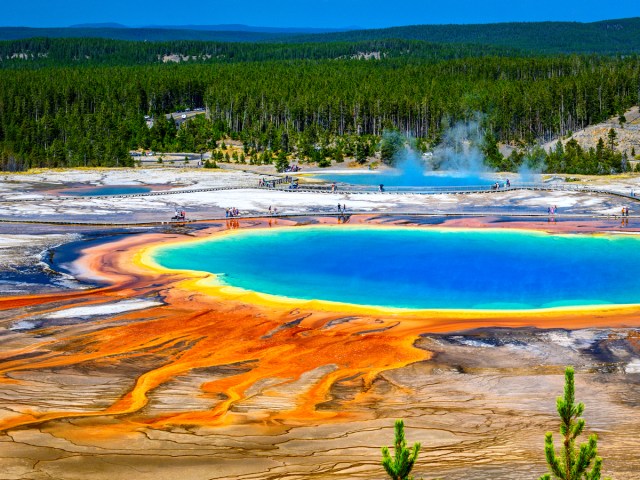
The punctual geyser Old Faithful may be the big draw in Wyoming’s Yellowstone National Park, but the Grand Prismatic Spring runs a close second. Wider than a football field and deeper than a 10-story building, the 160-degree Fahrenheit spring is the park’s largest, but that reason alone isn’t why so many visitors flock to see it. Vivid bands of yellow, orange, red, and green surround the deep blue center of the spring (and change with the seasons) — a stunning natural phenomenon that results from heat-loving microbes living in the blistering waters, which cool as they reach the spring’s edges.
Located in the Midway Geyser Basin, the Grand Prismatic Spring can be explored in a number of ways. An easy 0.8-mile boardwalk loops around it also circling Excelsior Geyser Crater, Opal Pool, and Turquoise Pool. For even better aerial views and no-filter-needed Instagram shots, hike to the overlook on the trail to Fairy Falls. Late risers are in luck: There’s no need to get up early for this visit, as the spring’s colors are obscured by mist in the mornings — for the best viewing, plan to see the spring at midday.
Natural Bridges – Utah
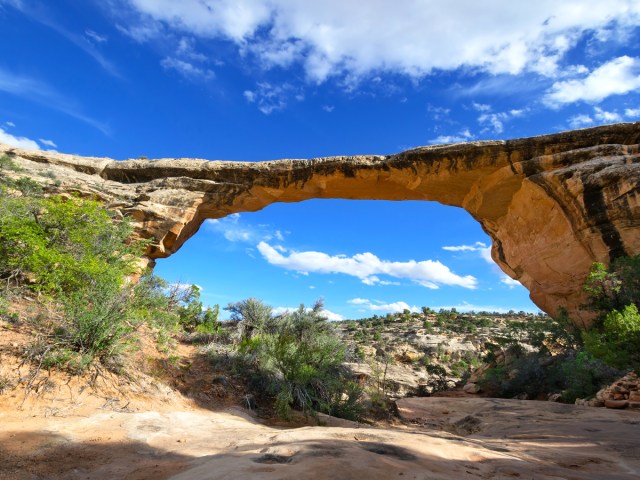
From stacked hoodoos to towering canyon walls carved by roaring rivers, Utah’s diverse landscapes are filled with fantastical geographical formations. And while most visitors high-tail it to one of the state’s “Mighty Five” national parks — Arches, Bryce Canyon, Canyonlands, Capitol Reef, and Zion — if you want to skip the inevitable crowds, the lesser-trafficked Natural Bridges National Monument is every bit as beautiful as its more famous neighbors.
Set in the southeastern corner of Utah, this monument covers over 7,00 acres of stunning terrain, including those iconic red rocks that curve and arch into three postcard-perfect natural bridges. Sipapu Bridge, the monument’s largest, spans 268 feet and reaches a height of 220 feet — taller than a 15-story building. Kachina, the second-largest bridge, features ancient petroglyphs and pictographs at its base left by the ancestral Puebloan people. And even though it’s the smallest of the three, Owachomo is the monument’s most popular, since it’s accessible via an easy half-mile hike from the parking area.
While many come for the hiking trails, consider spending the night under a blanket of stars, too. Like several other sites in Utah, Natural Bridges is also a certified International Dark Park, meaning it has some of the clearest night skies on the planet.
Denali – Alaska
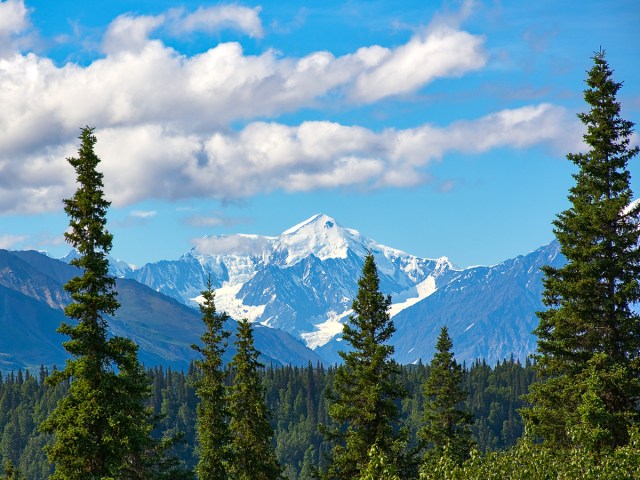
Seven of America’s 10 largest national parks are located in Alaska, but only one lays claim to Denali — the highest point in North America. Soaring 20,310 feet above sea level, Denali has lent its name to Denali National Park and Preserve (once known as Mount McKinley State Park) since 1980. Encompassing 6.1 million acres about a four-hour drive north from Anchorage, Denali is larger than the entire state of New Jersey. About 15% of this wondrous landscape is capped with glaciers, while the park and preserve also span more than 12,000 lakes and ponds. In the past 16 years, thousands of dinosaur trace fossils have been unearthed in the park, dating back as far as 72 million years.
Aside from its namesake peak, Denali has at least one other feature that makes it unique among national parks: It’s the only one to boast its own kennel of sled dogs. The park’s Alaskan Huskies draw their own sizable crowd — each summer, more than 50,000 people watch as park rangers lead sled dog demonstrations. At age nine, the sled dogs are retired and ready for adoption, so consider leaving the park not only with memories of the stunning scenery but also with a tail-wagger in tow.
Pictured Rocks Lakeshore – Michigan

From the 15 miles of glacially carved cliffs that give this park its name to the nature that surrounds them (42 miles of shoreline, densely forested trails, and copious seasonal waterfalls), the wild beauty of Pictured Rocks National Lakeshore is reason enough to visit Michigan’s Upper Peninsula. But because of a few particularities, the park has also become a pilgrimage site for enthusiast groups.
Located on Lake Superior’s fabled Shipwreck Coast — where sandstone reefs, thick fog, and monster waves can form a fearsome trio — Pictured Rocks National Lakeshore is the final resting place of at least 45 vessels, some still protruding evocatively from the water. You can scuba dive and snorkel among them or tour Au Sable Light Station, the 19th-century lighthouse that ultimately didn’t do them quite enough good. And if you want to see multiple wreck sites, you can even embark on a glass-bottom boat tour.
Beyond the shipwreck and maritime history fans, though, ice climbers come here from around the world each winter, when the rock faces freeze over and sprout what look like milky stalactites. The best time to experience this scene is the annual Michigan Ice Fest in February, when climbers of all skill levels gather for demos, classes, clinics and ice-cold lakeside beers.
Columbia River Gorge – Oregon and Washington
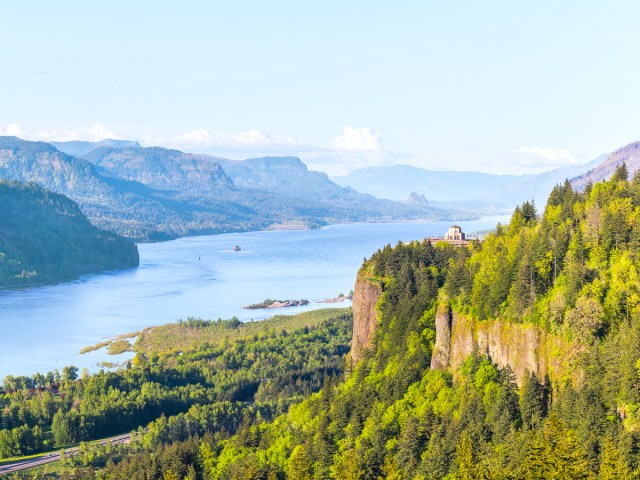
Only 30 miles east of Portland, you’ll find one of the most spectacularly beautiful wilderness areas in the Pacific Northwest. Stretching 85 miles along three counties in Oregon and three counties in Washington, the Columbia River Gorge National Scenic Area is home to more than 90 waterfalls and a river-carved canyon that, in certain areas, descends more than 4,000 feet. Also located here is Multnomah Falls, Oregon’s tallest waterfall, dropping 620 feet in two stages to the pool below. The falls flow throughout the year and are especially gorgeous when partly frozen during the winter months.
While the Columbia River Gorge is a paradise for outdoor recreation — including kiteboarding, hiking, rock climbing, cycling, and windsurfing — the surrounding area offers creature comforts like fine dining and hot springs lodges in Oregon’s fertile wine country. Drawing more than 2 million visitors a year, the rugged gorge is one of the rare wilderness areas that’s conveniently accessed without a car: A $10 daily shuttle provides transportation to highlights including Troutdale, Multnomah Falls, Cascade Locks, the Hood River, and the Dalles — a historic village that’s one of the oldest settlements on the West Coast.
Garden of the Gods – Colorado

Approximately 250 million years ago, the area just west of Colorado Springs was dotted with sand dunes and shallow seas. Along the front range of the Rocky Mountains at the base of Pikes Peak, spires of red sandstone were formed by tectonic upheaval and erosion, creating a mysterious and sacred space that was revered by Native Americans long before European settlers arrived. In 1859, a surveyor named Rufus Cable proclaimed the stunning landscape “a fit place for the gods to assemble,” and so its name was born. Once privately owned, much of the land in Garden of the Gods was given to the city of Colorado Springs in 1909, with the provision that it be preserved as a public park.
More than 2 million visitors each year arrive to marvel at the massive monoliths, some of which have ridges where water once flowed. (Fossilized seashells and sharks’ teeth have been found, too.) Climbers come from around the world to challenge themselves on the sheer towers, and trails abound for hikers of all abilities. If you’re in a hurry, the garden is glorious even when viewed from the windows of a car.
More from our network
Daily Passport is part of Inbox Studio, which publishes content that uplifts, informs, and inspires.
















